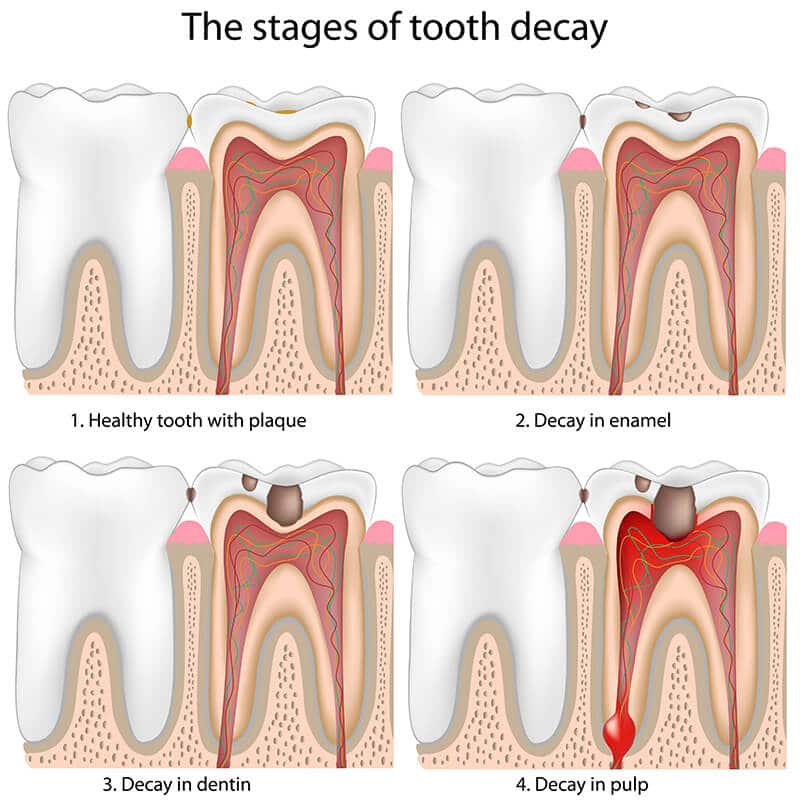What is a root canal treatment?
by Dr Anthony HuaSometimes your tooth gets to a stage where it either needs to be pulled out due to extensive trauma, decay or disease, the alternative is having a root canal treatment. A root canal can literally save your tooth!
The pulp of your tooth is the actual tooth “nerve”, if this nerve tissue dies it’s important to have it removed and replaced with a biocompatible root canal filling to prevent the spread of infection, this is in essence what a root canal treatment is. A tooth that has had a root canal treatment will often require a crown to provide strength, support and longevity to protect the underlying treatment.
Symptoms of tooth pulp damage or disease may include:
- Prolonged sensitivity to hot and cold temperatures
- Severe toothache pain with chewing or pressure
- Discolouration or darkening of the tooth
- Swelling or tenderness of the gum near the affected tooth
- Oozing of pus surrounding the affected tooth
- Facial swelling
Causes of tooth pulp damage or disease may include:
- Dental decay
- Trauma that damages a tooth
- Tooth grinding (bruxism)
- Cracks or fractures
- Advanced gum disease
Many people worry that a root canal will be painful, something that may have been the case in the past. Today, with advanced technology and techniques a root canal can be as comfortable as getting a filling. If the infected tooth pulp is not treated, it will cause an abscess which can lead to destruction of the bone surrounding the tooth.
A treated and restored tooth can last a lifetime with proper care. Root canals have a high success rate and are significantly more cost-effective than the alternative, tooth extraction and replacement with a bridge, denture or implant.
What happens during root canal treatment?
Root canal treatment involves removing any infected pulp or decaying sections of a tooth. This leaves your root canal empty and ready for your dentist to clean and shape it. Your dentist will then use a medicament to remove any remaining bacteria. Afterward, they will fill the canal with a biocompatible filling material and restore the tooth.
A root canal procedure can take several appointments, as time between visits is necessary to allow the medicaments to remove any residual bacteria in the canal/s. After your root canal treatment, you may experience some discomfort, but this should fade away. If the discomfort persists, be sure to contact your dentist.
Get In Touch
To determine the success of a root canal treatment, before and after x-rays are compared to monitor the tooth and surrounding bone structure. The treated tooth should last many years, provided you maintain good oral hygiene and generally look after your teeth.
If you want to get in touch to know more about the best treatment options available that will be successful for your smile, there are a number of ways for you to do so. Simply give us a call on (07) 5576 6208. If you’d rather see us in person, we’re based at 3/109 West Burleigh Road, Burleigh Heads QLD 4220. Alternatively, you can book an appointment online by filling in our contact form here.
 Article by Dr Anthony Hua – Principal Dentist
Article by Dr Anthony Hua – Principal Dentist
Dr Anthony Hua is the Founder & Principal Dentist at Burleigh Dental Studio. His passion, expertise and dedication to the field of dentistry have been recognised by his achievement of Fellowship status with the Australian Society of Implant Dentistry (ASID) and the International Congress of Oral Implantologists (ICOI).
Share Via:
CONTACT FORM
FIND US HERE

